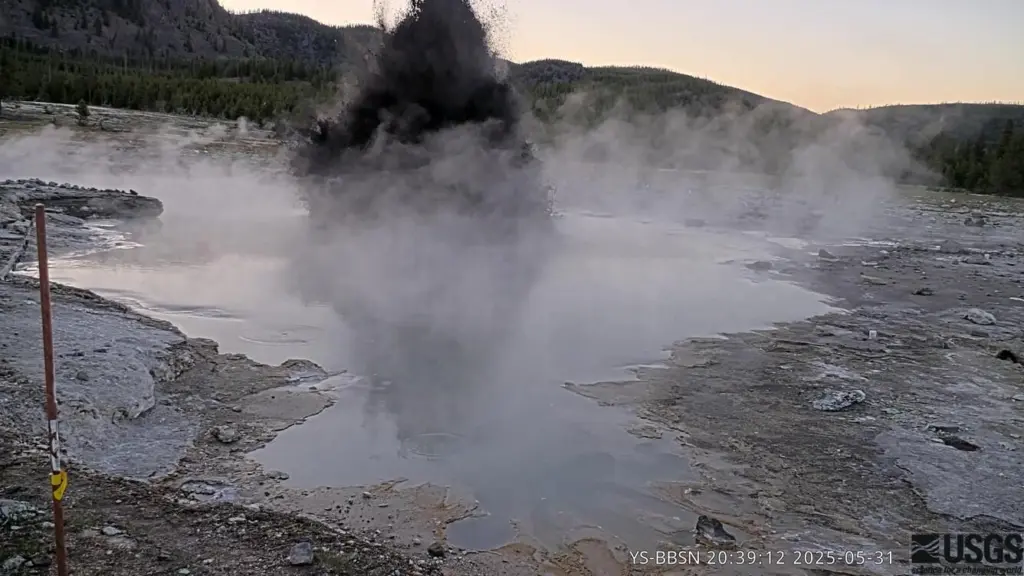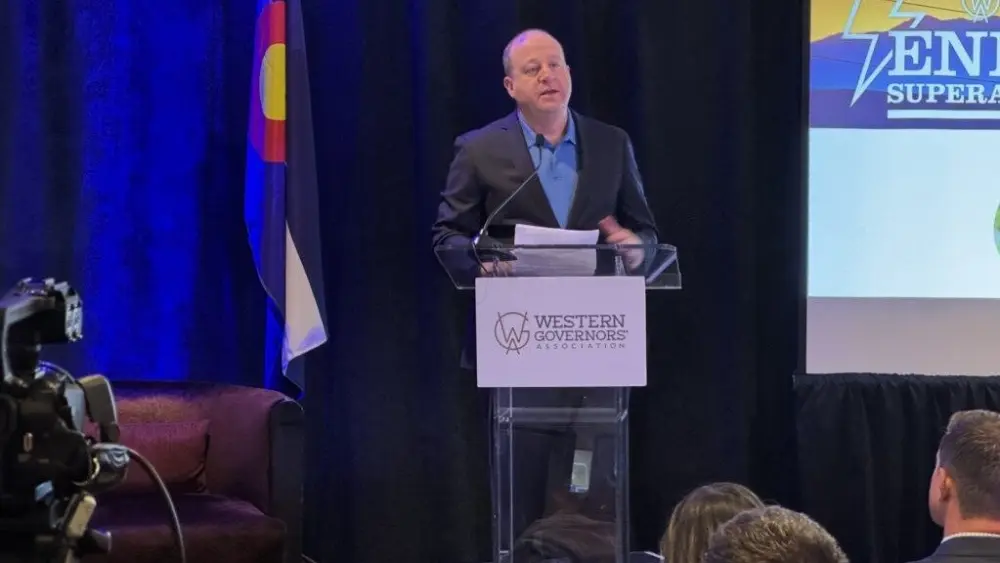YELLOWSTONE, MT – On the night of May 31 , an eruption from the Black Diamond Pool in Yellowstone National Park shot up about 20 feet, according to the Yellowstone Volcano Observatory.
On May 14, scientists had installed a temporary and mobile camera at the Biscuit Basin site, northwest of Old Faithful, following a massive explosion there on July 23, 2024.
A new view of Yellowstone National Park’s Biscuit Basin (literally!)
Yellowstone Volcano Observatory scientist-in-charge Michael Poland said the detection of the burst at the Black Diamond Pool shows the camera was a good investment, and the plan is to install a permanent monitoring station in the area.
“This felt like a really good use of resources to capture an event that will help us better understand what’s going on at Biscuit Basin,” Poland said.
Video captures hydrothermal events at Yellowstone National Park
This summer, scientists will be testing and phasing in the installation of a permanent station there, with a microphone to capture acoustic noise, GPS station, and equipment to monitor seismic changes.
The camera on the site can’t stream video, but it can record it on site, and it can send static images every 15 minutes to the Yellowstone Volcano Observatory, a consortium of state and federal agencies that monitor and provide hazard assessment in the Yellowstone Plateau region.
Poland said scientists capture and review those images for changes, and sure enough, the images of the pool on May 31 from 8:30 p.m. to 8:45 p.m. looked different.
“It looked like the pool had been disturbed, rocks moved, water was around all the edges,” Poland said.
He said a look at the video confirmed the camera had captured a small eruption.
Poland said a couple of eruptions after the explosion last summer had been observed, and a number of smaller ones had been detected based on seismic data and acoustic monitoring.
On Nov. 5, 2024, a geologist in the park taking samples witnessed an eruption of muddy water going up 20 or 30 feet, he said. Then, on Jan. 3, 2025, a tour group looking at bison nearby observed a small eruption in the pool.
“We have all these other suggestions of other data that these events have happened many times,” Poland said.
By comparison, Old Faithful shoots up from 106 feet to more than 180 feet, according to the National Park Service.
Poland said the smaller flareup captured on video is probably typical of the current activity at the Black Diamond Pool.
Active v. quiet periods of activity throughout Yellowstone’s history
The area has a history of eruptions and explosions, and it probably formed in the early 20th century, Poland said.
“Since that time, it has gone through periods when it has been a bit more active and then periods when it’s quiet,” he said.
Digging into the history of hydrothermal explosions at Yellowstone’s Biscuit Basin
In the mid-2000s to mid-2010s, it erupted maybe a few times a year, and then it went quiet until 2024, Poland said.
Last summer, in a massive explosion, the pool threw rocks as large as 3 feet wide hundreds of feet into the air and reformed pools. No one was hurt, but the boardwalk was damaged, and Yellowstone National Park still has marked the area as closed.
“The history at this particular pool seems to be one where it likes to have a muddy explosion from time to time,” Poland said.
But Poland said one explosion there doesn’t forecast another one.
At Old Faithful, the “plumbing system” is established, and it creates consistent behavior, Poland said. It erupts on a regular basis, as its name suggests.
However, Poland said most hydrothermal features don’t have such well-defined or steady plumbing systems.
He said one reason is that hot water carries lots of minerals, and as it gets close to the surface and cools, minerals drop off and tend to coat “conduit walls,” where water flows, and seal them off.
The water then looks for a different way to move, and it will break a seal, resulting in an explosion.
But he said scientists don’t know enough about the subsurface conditions of most hydrothermal areas or how they change over time to forecast which features will have explosions, when they might take place, or how big they might be.
“That’s one of the real challenges we face with hydrothermal activities,” Poland said.
In an email, a spokesperson for Yellowstone National Park said the parking lot and boardwalks are still closed at Biscuit Basin: “We are closely monitoring activity at the site for the possibility of additional events, and it will reopen when it is safe to do so.”
Daily Montanan, like the Idaho Capital Sun, is part of States Newsroom, a nonprofit news network supported by grants and a coalition of donors as a 501c(3) public charity. Daily Montanan maintains editorial independence. Contact Editor Darrell Ehrlick for questions: info@dailymontanan.com.
Idaho Capital Sun is part of States Newsroom, a nonprofit news network supported by grants and a coalition of donors as a 501c(3) public charity. Idaho Capital Sun maintains editorial independence. Contact Editor Christina Lords for questions: info@idahocapitalsun.com.





